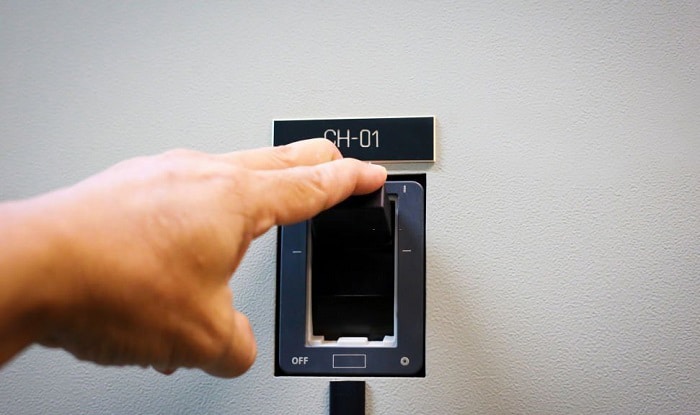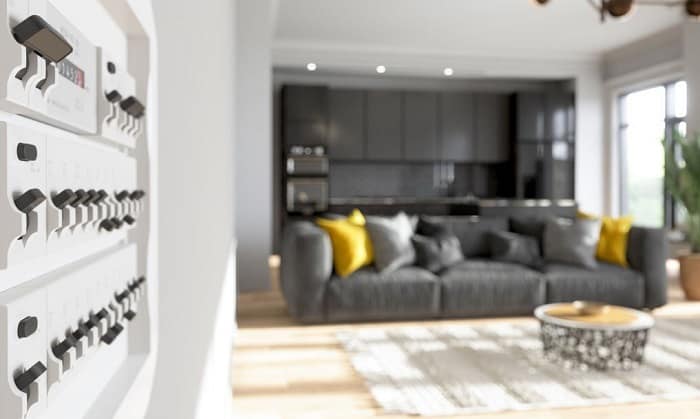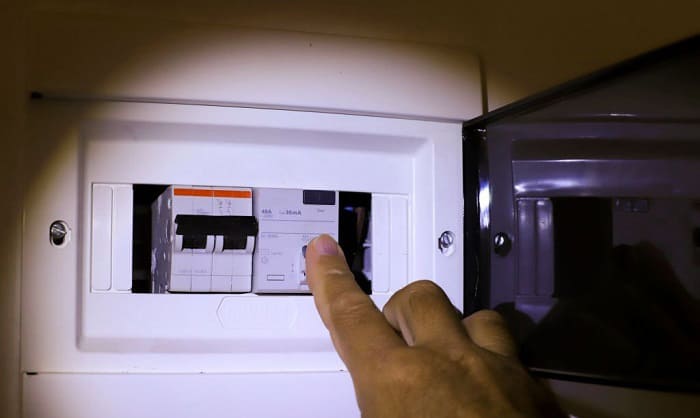The layout of every house and living abode differ starkly from one another. Certain interior designs and archetypes may have played a key role in determining how your home’s layout was sketched.
In considering where to place your main switch circuit breaker: home designers must take into consideration the area of your house where there will be minimal foot traffic.
Hence if you’re questioning, “where is the main breaker in my house?” Then you’ll most likely find them in secluded areas of your home. Some of the common places include the basement and garage.
Table of Contents
Where Is the Main Breaker in an Apartment or House
As I had said above, every home is designed differently. As such, the location of your main electrical breaker could largely vary depending on the isolated sectors of your abode.
But generally, the main breaker switch can commonly be found in areas where there is minimal foot traffic – that is, areas that are rarely occupied by residents. Some of the areas that come into my mind are the following:
- Garage
- Basement
- Utility area
- Inside specific and isolated lockers marked by the contractor
- Under the stair space
Do note, however, that some homes could have their main breaker installed outside of the building itself.
Though this is rare enough that I haven’t encountered it personally. I nonetheless implore that you remain informed regarding this specific breaker placement.
Overall, these are the areas where I had commonly found the main power switch in the house that I had worked on. Though note, however, that some home builders have, in some cases, deliberately installed home circuit breakers in specific areas.
If you cannot find your circuit breaker in the areas that I had described above, I would suggest that you directly ask your home’s contractor regarding the position of your main electrical switch.
For apartments and condos, your circuit breaker might be placed in a different spot due to space constraints. Hence, the common home breaker areas that I had outlined above may not be applicable in your place of residence.
Your condo or apartment’s circuit breaker could be positioned in a way that every resident can centrally approach it in the building. I outlined the common placements of the main circuit breaker in the following central areas:
- Hallways
- Common laundry areas
- Common basement
- Besides the reception area of the residential building
The rule of thumb for main breaker placement for apartments and other cohabitated residential buildings is that it must be placed in a common area. It could be accessed by the residents and building utility staff easily.
However, this is not the case for family houses. So take note of that. To recap, breakers for homes are often located in areas that aren’t accessed commonly by residents. On the other hand, apartment and condo breakers are typically placed centrally.
As a tip from me, I recommend that you scour your home or residential building to determine the placement of your main circuit breaker.
Tasks such as resetting your circuitry or even applying a main circuit breaker replacement require that you know the positioning of your residential breaker. So its importance cannot be understated.
Frequently Asked Questions
After explaining the common main breaker positions above, you may still have some reservations or concerns regarding central circuit breakers.
Among the leading questions that I encountered is: what does a main breaker look like? I understand that this could be confusing for people who aren’t well-versed with all things related to electricity.
To clarify, the main breaker looks like a grey, metallic box situated on your wall. Depending on the type of breaker box, the front of it contains a lock that, when pressed, opens the door. Its size depends on how large the property is.
Once you open it, you should see multiple “nodes”. Don’t worry; those are the breakers themselves – an electrical instrument that regulates the flow of electricity in your home.
Another critical question is: would it be possible to have no main breaker in service panel? To which I reply that it is possible.
However, a service panel without a main breaker is not compliant with the National Electrical Code. It is a gross violation of the electric code. Not only that, but it is extremely dangerous for your home.
Conclusion
For people unfamiliar with electrical instruments, finding your main breaker could be confusing. “Where is the main breaker in my house?” is a question that I often face while doing electrical projects.
The main breaker of your home should be located in an area that is unfrequented by your abode’s residents. Likewise, it should not be where that can be easily reached by people not knowledgeable about its purpose.
For apartments or condos, the breaker can be found in common areas that the residential building’s staff can easily access.

I am Edwin Jones, in charge of designing content for Galvinpower. I aspire to use my experiences in marketing to create reliable and necessary information to help our readers. It has been fun to work with Andrew and apply his incredible knowledge to our content.



